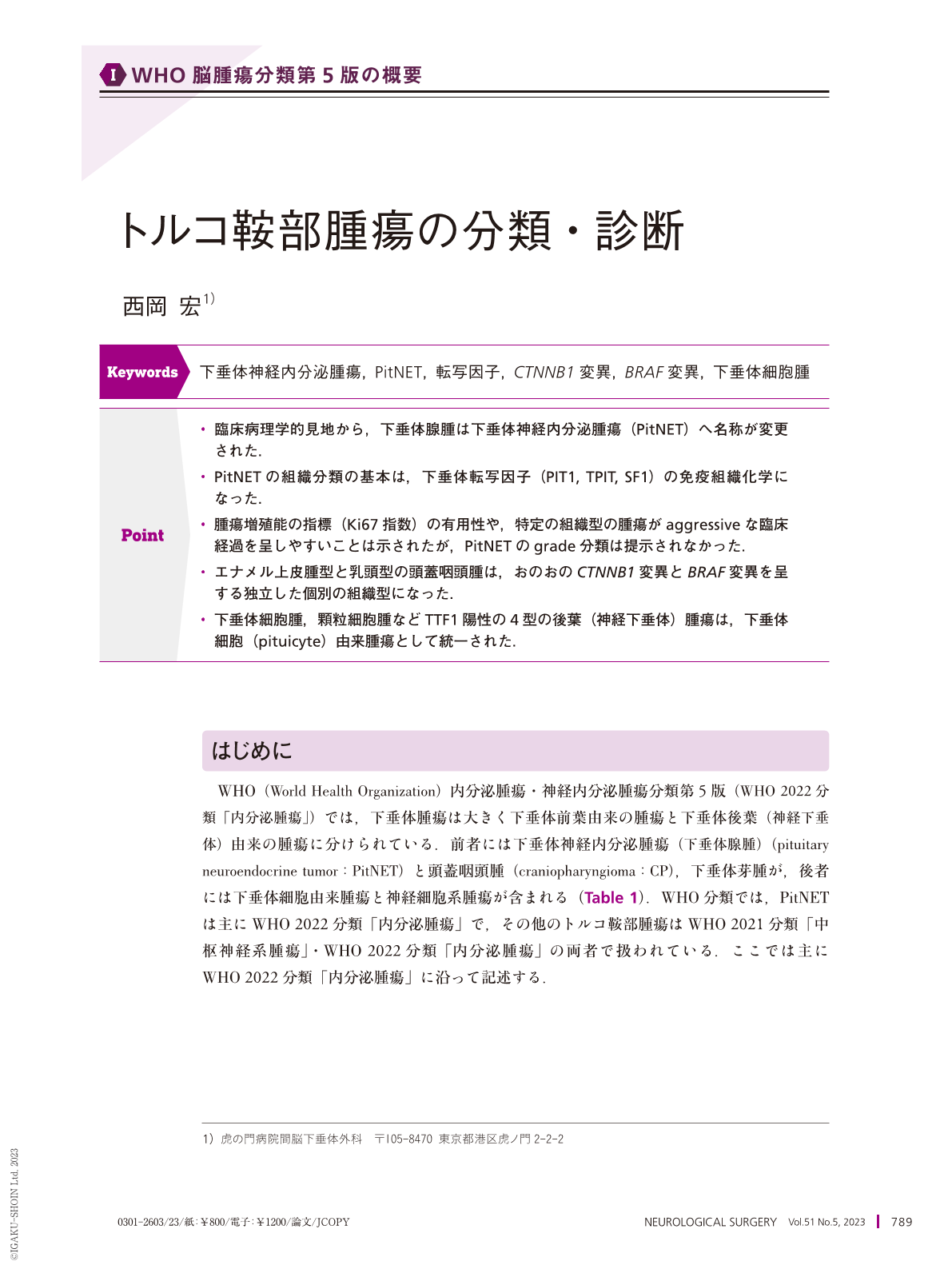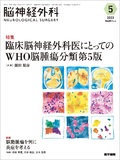Japanese
English
- 有料閲覧
- Abstract 文献概要
- 1ページ目 Look Inside
- 参考文献 Reference
Point
・臨床病理学的見地から,下垂体腺腫は下垂体神経内分泌腫瘍(PitNET)へ名称が変更された.
・PitNETの組織分類の基本は,下垂体転写因子(PIT1, TPIT, SF1)の免疫組織化学になった.
・腫瘍増殖能の指標(Ki67指数)の有用性や,特定の組織型の腫瘍がaggressiveな臨床経過を呈しやすいことは示されたが,PitNETのgrade分類は提示されなかった.
・エナメル上皮腫型と乳頭型の頭蓋咽頭腫は,おのおのCTNNB1変異とBRAF変異を呈する独立した個別の組織型になった.
・下垂体細胞腫,顆粒細胞腫などTTF1陽性の4型の後葉(神経下垂体)腫瘍は,下垂体細胞(pituicyte)由来腫瘍として統一された.
In the 5th edition of the WHO classification of pituitary tumors, there are several significant changes:(1)the nomenclature has evolved from“pituitary adenoma”to“pituitary neuroendocrine tumor”(PitNET);(2)PitNETs are now categorized in detail based on tumor lineage, cell type, and related characteristics;(3)the routine use of pituitary transcription factor(PIT1, TPIT, SF1)immunohistochemistry for PitNET classification;(4)there is a distinction between two types of craniopharyngioma(CP), adamantinomatous CP and papillary CP, characterized by CTNNB1(β-catenin)and BRAF mutations, respectively;(5)the integration of four subtypes of posterior lobe(neurohypophysial)tumors, known as the family of pituicyte tumors that express TTF1, is emphasized.
Regarding tumor proliferation markers, the assessment of the Ki-67 proliferation index remains important, although no specific cutoff value was provided. Certain PitNET subtypes have been recognized as clinically more aggressive, referred to as high-risk PitNETs. However, it is worth noting that the classification does not introduce a new grading system for PitNETs.

Copyright © 2023, Igaku-Shoin Ltd. All rights reserved.


